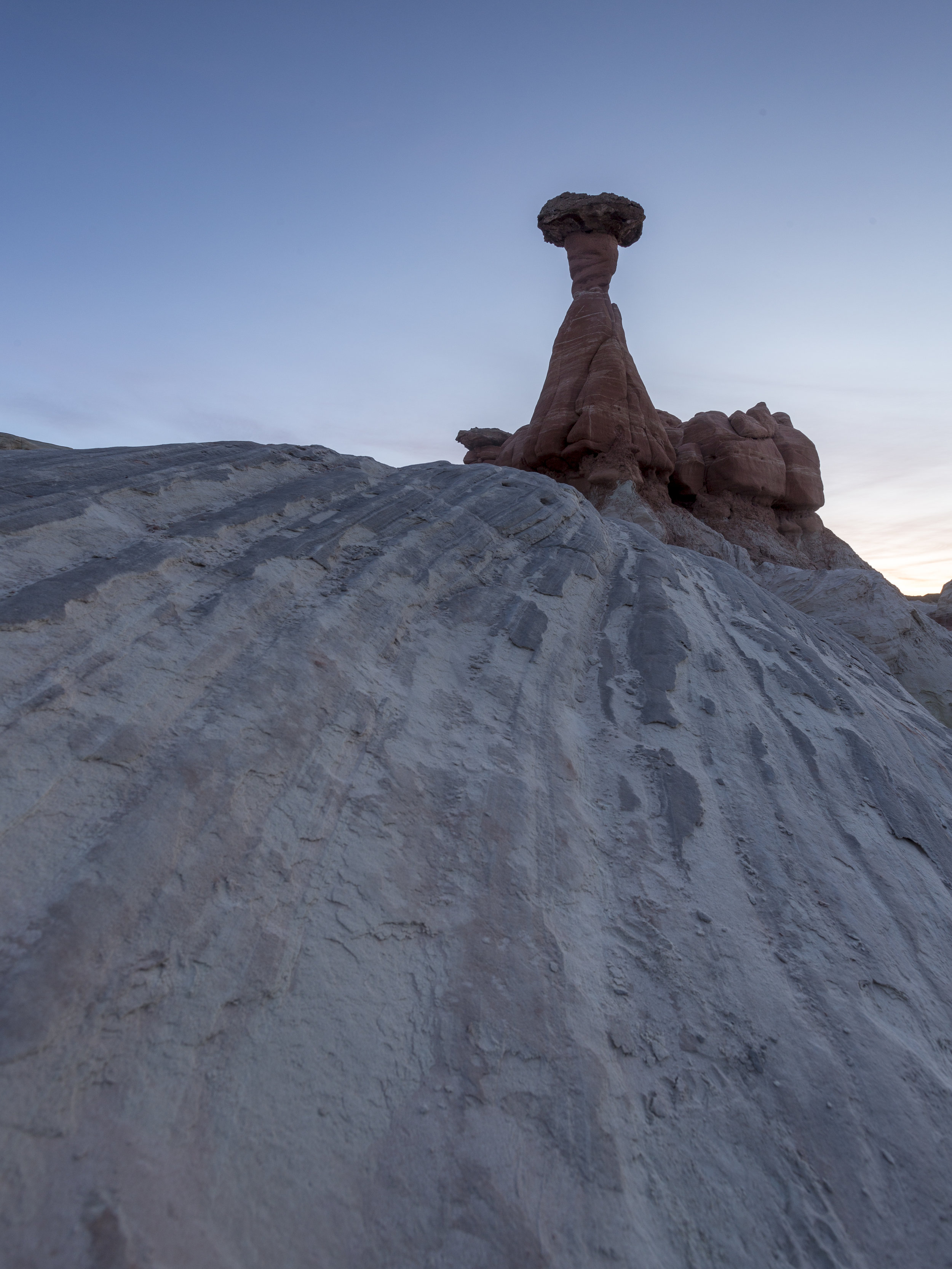You drive 6 hrs to a location you want to photograph the next morning.
All of your planning and weather apps say it’s going to be the best sunrise of the 21st century.
You sleep curled up in your car, and forego breakfast so you can be on the trail quickly.
You hike out into the wilderness at 5:00 am with a headlamp while the world is still dark.
You spend an hour canvasing the area for that perfect composition.
You find it and set up your camera.
As the sun begins to rise you anticipate how beautiful this image is going to be.
The sun comes up and,
The light begins to “pop off” and illuminate the scene behind you…
Knowing when to give up on a composition is an important lesson for photographers. Analyzing the scene and knowing a few variables will allow you to make an informed decision about whether anything will materialize within your composition. Noticing there were very few clouds above my subject, and seeing how the light was flooding the scene behind me, I made a quick decision to adjust my composition to the other side of this hoodoo.
Thankfully I had scouted a few different compositions in case this very scenario were to happen, and I was able to quickly set up before the beautiful morning light disappeared. It’s important not to get glued to any one composition since variables in weather can affect your image’s outcome. When shooting sunrises and sunsets where it’s important to have a good base of high clouds, I tend to try and find 4 solid compositions; one facing north, one south, one east, and one west. This way when the light begins to go nuts and I’m in the wrong spot, I don’t have to forfeit the morning photoshoot and can still get a great image.
Below is the image I captured once I adjusted to the scenario unfolding around me.
As you can see, by paying attention to my surroundings, and giving up on the other composition, I was able to create a far greater image. After I had this image in the bag, I was able to play around a bit with some other compositions I had in mind.





